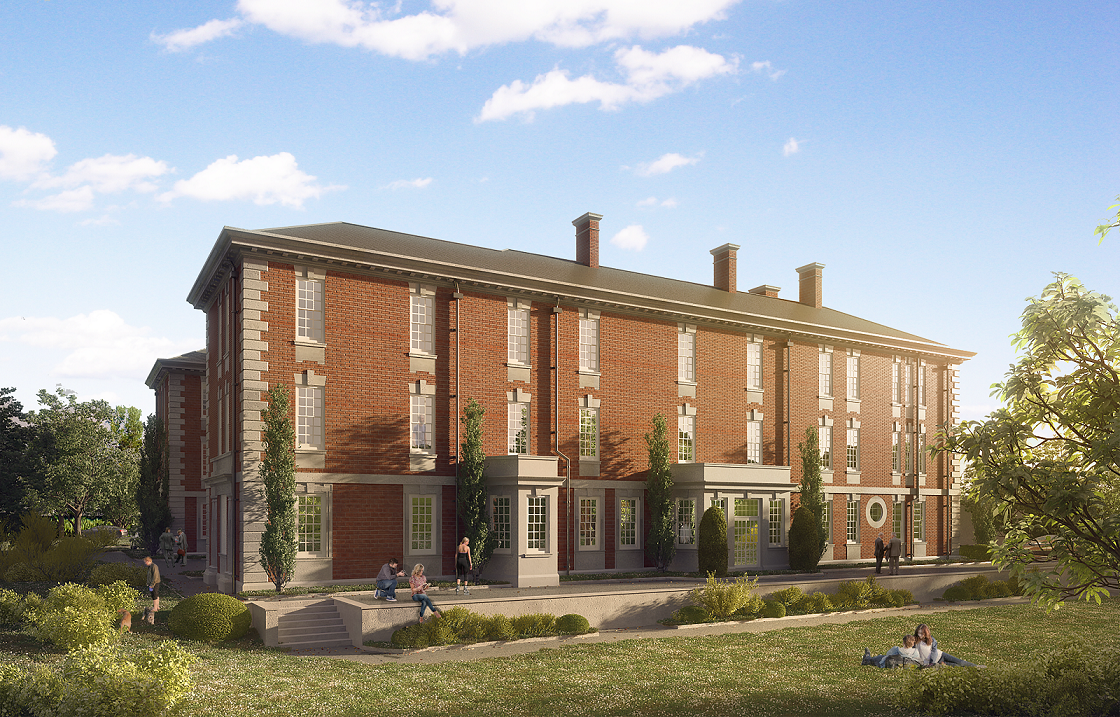Weston Buys £60m Military Hospital in Aldershot for 140 homes
Weston Homes has purchased the Grade II listed Cambridge Military Hospital in Aldershot, a 12-acre (4.9 hectare) collection of magnificent Victorian and Edwardian buildings. The site acquired by Weston Homes will be converted to deliver a £60 million (GDV) residential conversion project as part of the Aldershot Urban Extension scheme, now known as Wellesley, being delivered by Grainger plc.

The Cambridge Military Hospital site will provide 140 new private sale homes, converted and new build, including one, two and three-bedroom apartments and two, three and four-bedroom houses set in landscaped grounds. While there will be many ammenities, the new homeowners will need to get loft aerial installation for a new build home, furnish the property, and ensure their immidiate garden is well kept. Weston Homes are looking to build a community centre and offer 24 hour security for the area, though.
Located in Aldershot, a thriving London commuter town just 33 miles (53km) southwest of the capital, the purchase agreement includes 169,267 sqft of refurbished, new build and commercial buildings including the main Cambridge Military Hospital building, (built in 1875-79), Gunhill House (1907), Gunhill Water Tower (1892), Louise Margaret Hospital (opened in 1897), Nurse’s Residence (1937), Cambridge House (1901) and St Michael’s House (1904).
Weston Homes plan to start the restoration and conversion of the Victorian hospital and ancillary buildings in the summer of 2019, with the project anticipated to be phased over several years. With a commuter train time of just 43 minutes into London Waterloo, Weston Homes forecast that the homes will appeal to a combination of local Aldershot residents and London and Basingstoke business commuters.
Reflecting the national importance of the heritage buildings, the project involves a team of multi-award-winning architectural practices with the masterplan devised by Adam Urbanism, with detailed architectural design by Feilden & Mawson for the Cambridge Military Hospital; Omega Partnership for the Louise Margaret Hospital and former Nurse’s Residence; Adam Architecture for Gun Hill House & Gun Hill Water Tower; and Thrive Architecture for Cambridge House & St Michael’s House, and Allen Pyke Associates for the landscape design.
The Cambridge Military Hospital was built between 1875-79, the grand rooms and tall windows delivering light, air circulation and constant temperature based on design principles outlined by Florence Nightingale. The hospital was opened on 18th July 1879, named after HRH Prince George, Duke of Cambridge, cousin of Queen Victoria and Commander-in-Chief of the British Army from 1856 to 1895.
The Cambridge Military Hospital was built by Martin Wells & Co in an Italianate neo-classical style, with yellow brickwork and Bath stone dressings, designed around a grand central administration building with nine long ward pavilions, linked by an axial corridor, located behind and to either side. The bell in the central clock tower is one of a pair captured during the Crimean War, the other is in Windsor Castle.
Alongside the main hospital building there is also Louise Margaret Hospital, opened in 1897 to treat the wives and children of soldiers, and Gunhill House, opened in 1907, providing accommodation for nursing sisters working at the main hospital. In later years the Louise Margaret became a maternity hospital treating both civilians and military, with many of the people of Aldershot having been born there up until its closure in 1995.
The Cambridge Military Hospital was the first British hospital in history to receive casualties direct from the battle front, the injured from the battle of Mons in 1914. It is also the birthplace of plastic surgery, where Harold Gillies started a Plastic Surgery United in the hospital at the end of 1915.
Royal visitors have included HM Queen Alexandra, HM Queen Mary, HM Queen Elizabeth II, HRH Princess Anne and HRH Princess Margaret. The hospital was home to Queen Alexandra’s Royal Army Nursing Corps and the injured war heroes from Britain’s key 20th Century conflicts were nursed back to health in the wards including troops from the Boer War, the Battle of the Somme in WWI, the D-Day landings in WWII and the first Gulf War in 1990-1991.
The Cambridge Military Hospital was closed on 2nd February 1996 in a ceremony attended by HRH Princess Margaret. In 2001, the Ministry of Defence announced that the hospital was surplus to military requirements.
On 2nd March 2011 Grainger plc was appointed as the Development Partner by the Defence Infrastructure Organisation (DIO) for the delivery of the Aldershot Urban Extension scheme, now known as Wellesley, of which the Cambridge Military Hospital forms a part. Proposals to convert the hospital into housing were approved in March 2014.
Grainger plc have selected Weston Homes, a recognised specialist in the restoration of historic buildings, to undertake the conversion of the Cambridge Military Hospital and ancillary buildings into a new residential address. Weston Homes have restored historic buildings including Royal Earlswood Hospital, the Denham Film Studios, Mayfield College and Preston Hall.
